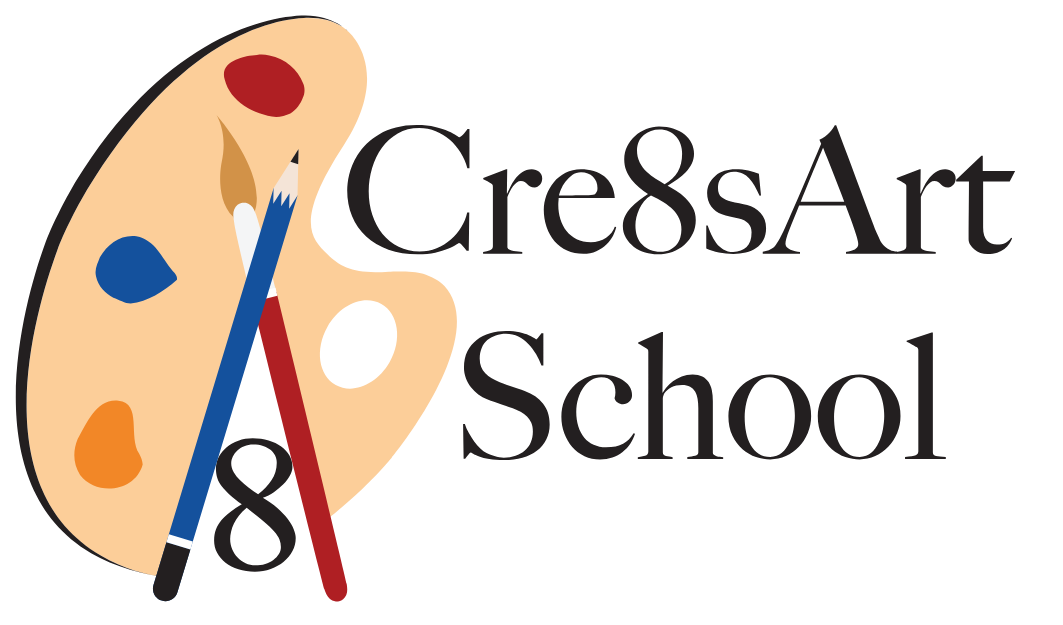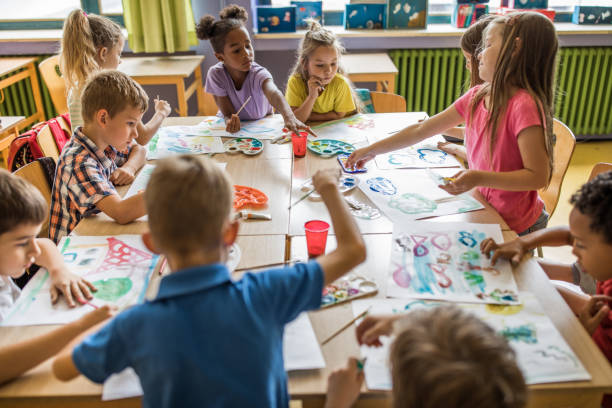When it comes to a child’s development, parents often focus on core subjects like math, science, and language. But one of the most underrated tools for boosting academic performance might be right in front of us: art classes. From painting and drawing to sculpture and digital design, art education does more than nurture creativity—it strengthens cognitive skills, improves focus, and even enhances academic achievements. At Cre8sart School, we’ve witnessed firsthand how engaging in art can transform children into more confident, curious, and capable learners.
Why Art Classes Matter
1. Enhances Cognitive Skills
Art stimulates the brain in unique ways. Activities like drawing, sculpting, or even coloring require children to plan, visualize, and execute complex ideas. These skills translate into improved problem-solving and critical thinking abilities—tools that are vital for tackling subjects like mathematics and science.
2. Improves Memory and Retention
When children engage in creative exercises, they are often asked to remember sequences, patterns, or techniques. This practice strengthens memory pathways in the brain, which can aid in learning and recalling information across all academic subjects.
3. Boosts Focus and Discipline
Art requires patience and attention to detail. Children learn to focus on tasks for extended periods and develop a sense of discipline as they work towards completing a project. These skills are directly transferable to their academic studies, from completing homework to preparing for exams.
4. Encourages Emotional Expression and Confidence
School can be stressful, and children often struggle to express their feelings verbally. Art classes provide a healthy outlet for emotions, helping them manage stress, build resilience, and gain confidence. Confident students are more likely to participate in class discussions, ask questions, and take on challenging tasks.
5. Strengthens Communication Skills
Whether a child is explaining a painting, presenting a sculpture, or collaborating on a group project, art encourages clear communication and social interaction. These experiences enhance verbal and non-verbal communication skills that are essential for academic success.
Why Choose Cre8sart School for Art Classes
At Cre8sart School, we believe that every child has a unique creative spark. Our art classes are designed not only to nurture creativity but also to complement your child’s academic growth. Here’s what sets us apart:
- Expert Instructors: Our teachers are passionate artists and experienced educators who understand how to integrate learning and creativity.
- Hands-On Learning: Students don’t just watch—they create. Our projects are designed to challenge the mind while allowing freedom of expression.
- Holistic Approach: We focus on cognitive, emotional, and social development, ensuring that students grow in all areas.
- Fun and Engaging Environment: We believe learning should be enjoyable. Our classrooms are safe spaces where children can explore, experiment, and thrive.
Practical Tips to Support Your Child’s Learning Through Art
While enrolling your child in art classes in Fort Lee is a great start, you can also support their academic growth at home:
- Encourage Daily Creativity: Even 15–20 minutes of sketching, coloring, or crafting daily can have noticeable benefits.
- Discuss Their Work: Ask your child to explain their artwork. This practice strengthens verbal skills and boosts confidence.
- Link Art to Learning: Use art to explore concepts in math, science, or history. For example, creating a model of the solar system combines creativity with science.
- Celebrate Efforts, Not Just Results: Praising effort encourages persistence, a trait that helps in both art and academics.
FAQs About Art Classes and Academic Performance
- At what age should my child start art classes?
Children can start as early as 3 years old with simple activities like coloring and clay modeling. As they grow, classes can become more structured to challenge cognitive and creative skills. - How often should my child attend art classes?
Even once or twice a week can make a difference, but regular engagement—2–3 times a week—provides the most noticeable benefits. - Are art classes suitable for children who aren’t “naturally creative”?
Absolutely! Art is about expression, exploration, and learning. Every child can benefit, regardless of their innate artistic talent. - Can art classes help with learning difficulties?
Yes. Art classes can improve focus, memory, and communication skills, which are especially helpful for children with learning difficulties or ADHD. - Do art classes replace academic subjects?
Not at all. Art classes complement academics by enhancing cognitive skills, confidence, and problem-solving abilities.
Conclusion
Art is more than just an extracurricular activity—it’s a powerful tool for boosting your child’s academic performance. By developing creativity, focus, memory, and emotional resilience, art classes for kids in Fort Lee lay the foundation for lifelong learning. At Cre8sart School, we are committed to nurturing every child’s unique potential, helping them excel academically while fostering a love for creativity.
Investing in art education today can transform your child into a more confident, capable, and curious learner tomorrow. Give your child the gift of creativity—it’s an investment that pays dividends in academics and beyond.

